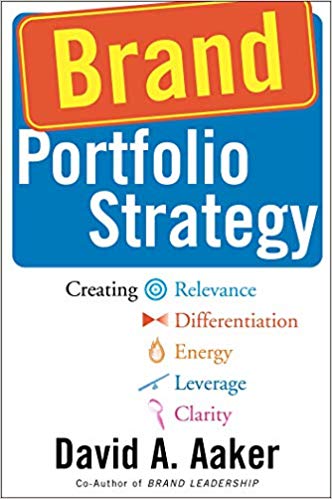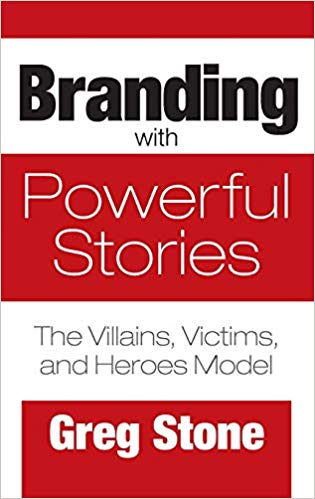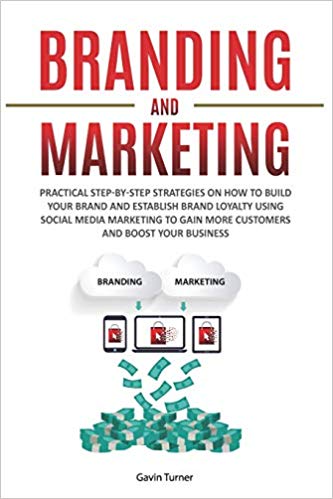Every marketer’s dream is build a strong well-known brand. This is one of the most difficult tasks marketers face during their marketing career. You should never expect to build he brand in a year or two. It takes time and lot of work. And to make this a bit easier it is always good to get some ideas and help by reading the branding books.
Today I want to share with you some really good books dedicated to one of the most difficult and important topics in marketing – branding. I call them the Delightful Eight.
Building Strong Brands
As industries turn increasingly hostile, it is clear that strong brand-building skills are needed to survive and prosper. In David Aaker’s pathbreaking book, Managing Brand Equity, managers discovered the value of a brand as a strategic asset and a company’s primary source of competitive advantage. Now, in this compelling new work, Aaker uses real brand-building cases from Saturn, General Electric, Kodak, Healthy Choice, McDonald’s, and others to demonstrate how strong brands have been created and managed.
A common pitfall of brand strategists is to focus on brand attributes. Aaker shows how to break out of the box by considering emotional and self-expressive benefits and by introducing the brand-as-person, brand-as-organization, and brand-as-symbol perspectives. The twin concepts of brand identity (the brand image that brand strategists aspire to create or maintain) and brand position (that part of the brand identity that is to be actively communicated) play a key role in managing the “out-of-the-box” brand.
A second pitfall is to ignore the fact that individual brands are part of a larger system consisting of many intertwined and overlapping brands and subbrands. Aaker shows how to manage the “brand system” to achieve clarity and synergy, to adapt to a changing environment, and to leverage brand assets into new markets and products.
Aaker also addresses practical management issues, introducing a set of brand equity measures, termed the brand equity ten, to help those who measure and track brand equity across products and markets. He presents and analyzes brand-nurturing organizational forms that are responsive to the challenges of coordinated brands across markets, products, roles, and contexts. Potentially destructive organizational pressures to change a brand’s identity and position are also discussed.
As executives in a wide range of industries seek to prevent their products and services from becoming commodities, they are recommitting themselves to brands as a foundation of business strategy. This new work will be essential reading for the battle-ready.
Hello, My Name Is Awesome: How to Create Brand Names That Stick
Every year, 6 million companies and more than 100,000 products are launched. They all need an awesome name, but many (such as Xobni, Svbtle, and Doostang) look like the results of a drunken Scrabble game. In this entertaining and engaging book, ace naming consultant Alexandra Watkins explains how anyone—even noncreative types—can create memorable and buzz-worthy brand names.
No degree in linguistics required. The heart of the book is Watkins’s proven SMILE and SCRATCH Test—two acronyms for what makes or breaks a name. She also provides up-to-date advice, like how to make sure that Siri spells your name correctly and how to nab an available domain name. And you’ll see dozens of examples—the good, the bad, and the “so bad she gave them an award.” Alexandra Watkins is not afraid to name names.
Building a StoryBrand: Clarify Your Message So Customers Will Listen
Donald Miller‘s StoryBrand process is a proven solution to the struggle business leaders face when talking about their businesses. This revolutionary method for connecting with customers provides listeners with the ultimate competitive advantage, revealing the secret for helping their customers understand the compelling benefits of using their products, ideas, or services. Building a StoryBrand does this by teaching listeners the seven universal story points all humans respond to, the real reason customers make purchases, how to simplify a brand message so people understand it, and how to create the most effective messaging for websites, brochures, and social media.
Whether you are the marketing director of a multibillion-dollar company, the owner of a small business, a politician running for office, or the lead singer of a rock band, Building a StoryBrand will forever transform the way you talk about who you are, what you do, and the unique value you bring to your customers.
Brand Portfolio Strategy: Creating Relevance, Differentiation, Energy, Leverage, and Clarity
In this long-awaited book from the world’s premier brand expert and author of the seminal work Building Strong Brands, David Aaker shows managers how to construct a brand portfolio strategy that will support a company’s business strategy and create relevance, differentiation, energy, leverage, and clarity.
Building on case studies of world-class brands such as Dell, Disney, Microsoft, Sony, Dove, Intel, CitiGroup, and PowerBar, Aaker demonstrates how powerful, cohesive brand strategies have enabled managers to revitalize brands, support business growth, and create discipline in confused, bloated portfolios of master brands, subbrands, endorser brands, co-brands, and brand extensions.

Aaker offers readers step-by-step advice on what to do when confronting scenarios such as the following:
- Brands are underleveraged
- Business strategy is at risk because of inadequate brand platforms
- Firm’s brands are tired and bland
- Strategy is paralyzed by a lack of priority among the brands
- Brands are cluttered and confusing to both customers and employees
- Firm needs to move into the super-premium or value arenas to create margin or sales volume
- Business faces a relevance threat caused by emerging subcategories
- Margin pressures require points of differentiation
Renowned brand guru Aaker demonstrates that assuring that each brand in the portfolio has a clear role and actively reinforces and supports the other portfolio brands will profoundly affect the firm’s profitability. Brand Portfolio Strategy is required reading not only for brand managers but for all managers with bottom-line responsibility to their shareholders.
Branding with Powerful Stories: The Villains, Victims, and Heroes Model
Whether you are branding your company, your product, your service, or yourself, learn to boost the power of your story and convey a compelling message in any setting by incorporating villains, victims, and heroes.
- Provides a blueprint for constructing a story that will connect narrator and listener through the scientifically proven effect of neural coupling
- Emphasizes the importance of personal authenticity in effective storytelling
- Provides abundant tips on emotional branding, writing, rhetoric, vocalization, pacing, graphics, body language, breathing, and above all, creating drama
- Applies to a broad array of applications and settings, such as job interviews, ad campaigns, and professional presentations
Power Up Your B2b Branding: And Make Your Competitors Hate You in 35 Days
For decades, psychologists have been perpetuating a saying attributed to Eleanor Roosevelt, “No one can make you feel inferior without your consent.” This is total B.S. because every time your competitor (you know the one I’m talking about) launches a new ad campaign or marketing stunt, customers eat it up. Your customers. Bam! Your heart sinks. Your head explodes.
As a marketing professional, you feel you’ve failed your company. I can only guess but I’ll bet your company makes a better product, and your service is far superior, too. (Yup, life isn’t fair.) So you have to decide. Will you hang your head and accept defeat? Or worse yet, make excuses for getting beat up on the marketplace playground? Or, is today the day you decide to take charge of your brand and the trajectory of your growth?If you are a Chief Marketing Officer, Marketing Director, Brand Manager, Digital Marketing
Specialist or other influencer of your company’s branding and marketing, I want to make you a promise. In 35 days you will stop introducing yourself as the person responsible for your company’s marketing, and start introducing yourself as the person IN CHARGE of your company’s marketing. Not one, but two editors tried to talk me out of writing this book.
Because much of its content is heavily biased toward creative- and emotion-driven thinking―stuff both editors felt would unfairly challenge marketing directors and turn off corporate decision-makers. I respectfully disagree. It is not a new concept that people buy on emotion (95% of our brains―and therefore our decisions―are powered by emotion) and later validate their purchase decisions withrational thought. So it is imperative to purposefully create, or re-create your branding and marketing based on emotional expression, not just rational thought and data.
I’ve been using creative- and emotion-based stimuli described in this book for over 15 years and found that marketing directors and corporate decision makers “get it” and absolutely hone in on how to identify the things that make their brands unique and powerful. And how to articulate their brands’ purpose and product features and benefits in unique and powerful ways―in traditional, experiential and digital channels.Most of the marketing people I’ve worked with are ingenious, hard-working and proud of their companies. The problem is, most of them (especially those in B2B) underestimate the power of branding and marketing and rely almost entirely on their sales people and reps to introduce products, build relationships and grow their businesses. My mission is to help them power up their branding and marketing so they can shorten the sales cycle, generate more qualified leads, build stronger customer relationships and leapfrog right over their competitors.
Kellogg on Branding in a Hyper-Connected World
Kellogg on Branding in a Hyper-Connected World offers authoritative guidance on building new brands, revitalizing existing brands, and managing brand portfolios in the rapidly-evolving modern marketplace. Integrating academic theories with practical experience, this book covers fundamental branding concepts, strategies, and effective implementation techniques as applied to today’s consumer, today’s competition, and the wealth of media at your disposal.
In-depth discussion highlights the field’s ever-increasing connectivity, with practical guidance on brand design and storytelling, social media marketing, branding in the service sector, monitoring brand health, and more.
Authored by faculty at the world’s most respected school of management and marketing, this invaluable resourceincludes expert contributions on the financial value of brands, internal branding, building global brands, and other critical topics that play a central role in real-world branding and marketing scenarios.
Creating a brand—and steering it in the right direction—is a multi-layered process involving extensive research and inter-departmental cooperation. From finding the right brand name and developing a cohesive storyline to designing effective advertising, expanding reach, maintaining momentum, and beyond, Kellogg on Branding in a Hyper-Connected World arms you with the knowledge and skills to:
- Apply cutting-edge techniques for brand design, brand positioning, market-specific branding, and more
- Adopt successful strategies from development to launch to leveraging
- Build brand-driven organizations and reinforce brand culture both internally and throughout the global marketplace
- Increase brand value and use brand positioning to build a mega-brand
In today’s challenging and complex marketplace, effective branding has become a central component of success. Kellogg on Branding in a Hyper-Connected World is a dynamic, authoritative resource for practitioners looking to solve branding dilemmas and seize great opportunities.
Branding and Marketing
If you want to discover how to build your brand like Apple and establish brand loyalty on social media for more sales, then you need to read this book.
Did you know:
- The brand worth the most in the entire world is Alphabet—better known as Google, and it`s worth $286 billion.
- It takes 5 to 7 impressions to produce a fragment of brand awareness.
- It takes just 10 seconds for people to form an impression of your brand.
When people see the most popular brands, they form a mental shortcut and associate their brands to the qualities the company’s products and services are known for. For example, when buyers see the Apple logo printed on a smartphone, they’re likely thinking “functional to use” and “reliable” which leads them to buy the product.
Unfortunately, to think that just creating a cool looking logo for their website would immediately translate to sales is not the case; it takes a strategical approach to build a brand that buyers would love and continue coming back to.
Aside from strategic planning, building a brand also means promoting it to where your target audience is.
If you feel strong about your branding skills I recommend to check this Magnificent Seven marketing books.
Read more, do greater things!











